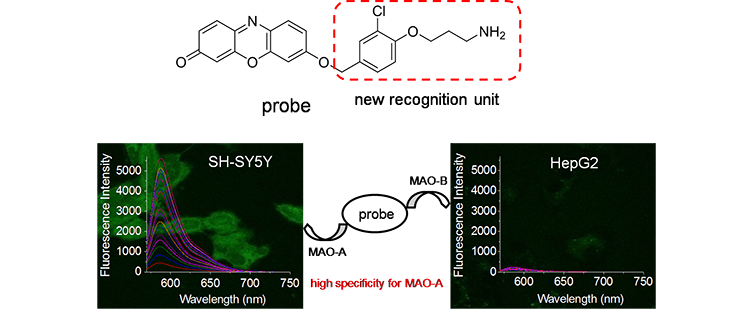Because of their high sensitivity and spatiotemporal resolution, excellent spectroscopic (chromogenic, fluorescent, or chemiluminescent) probes have attracted much attention. Prof. Ma’s research group at the Institute of Chemistry, Chinese Academy of Sciences, has been engaged in this field for more than two decades, during which a series of new spectroscopic probes and sensing/labeling methods for biologically active species have been developed by employing different chemical reactions. Based on their outstanding achievements in the field, Prof. Ma and his colleagues have been invited to summarize various design strategies on spectroscopic probes (Chem. Commun., 2012, 48, 8732-8744; Chem. Rev., 2014, 114, 590-659; Chem. Sci., 2016, 7, 6309-6315).
Recently, they have proposed a general design strategy for a fluorescent probe specific for an enzyme by using the characteristic structure of the enzymatic inhibitor, and this is successfully demonstrated with monoamine oxidase A (MAO-A). By combining the substituted phenol of clorgyline with propylamine as a new recognition moiety for MAO-A, a resorufin-based probe was prepared (Figure 1). The probe can effectively recognize MAO-A rather than MAO-B. Moreover, the probe has been successfully used to image the endogenous MAO-A in live cells by confocal fluorescence imaging, which is further validated by control probe experiment and western blot assay (Angew. Chem. Int. Ed., 2017, 57, 15319-15323).

Figure 1. New spectroscopic probe and its use in specific fluorescence imaging of MAO-A.
